PANTHEON PHANTASMA
„Et les rites sont dans le temps ce que la demeure est dans l‘espace.” – Antoine de Saint–Exupery
Thus the writer attributes to the ritual a potential for conveying a feeling of security and defines it further as a symbolic technique of containment. „They transform being in the world into being at home. They make the world a reliable place. They are in time what an apartment is in space. They make time habitable. Yes, they make it walkable like a house. They arrange time, furnish it.“ (*Byun Chul Han, 2019)
In uncertain times, people usually conjure up history, tradition and cultural heritage. Thus a ritual can also be understood as a reflection on a common identity.
The design of the >ritual habitus< is constantly bound to social influences. They transmit and represent those values and orders which carry a community. Rituals often amortize a community without linguistic communication, but through their very own semiotic system. With a view to a society that is growing together more and more, but at the same time individualized, which allows the individual to be isolated from himself and his environment, new forms of community life - new rituals - are needed. As soon as the constitution of space changes, the home must be adequately adapted.
In the ritual framework, things are not consumed or consumed, but needed. Ritual practices ensure that we deal and resonate not only with other people, but also with things. Rituals possess the ability to make accessible the unmistakable aura of earthly material that radiates incessantly from its core. Conversely, the earthly material gives the ritual an anchor to which transcendent experiences can be tied. Thus the ritual connects man and material, space and time.
If we want to understand rituals as „cunstrui humanitas“, spaces must be created in which ritual forms can be spoken about. The exhibition „Pantheon Phantasma“ revolves around the many varieties of our identitary obsession in inhabited space: from rediscovered rites and invented rituals to inflation from the irrational idealization of living and back to the absolute authenticity and originality of the home.
This project has been made possible by Stadt Köln
13.01–19.01.2020
VERNISSAGE:
13.01.2020 6PM
PERFORMANCE:
Haide Sestra, DJ Malinka, Monavo, Reina Lucia.
ADRESS:
Alte Feuerwache
Melchiorstraße 3
50670 Cologne
Germany


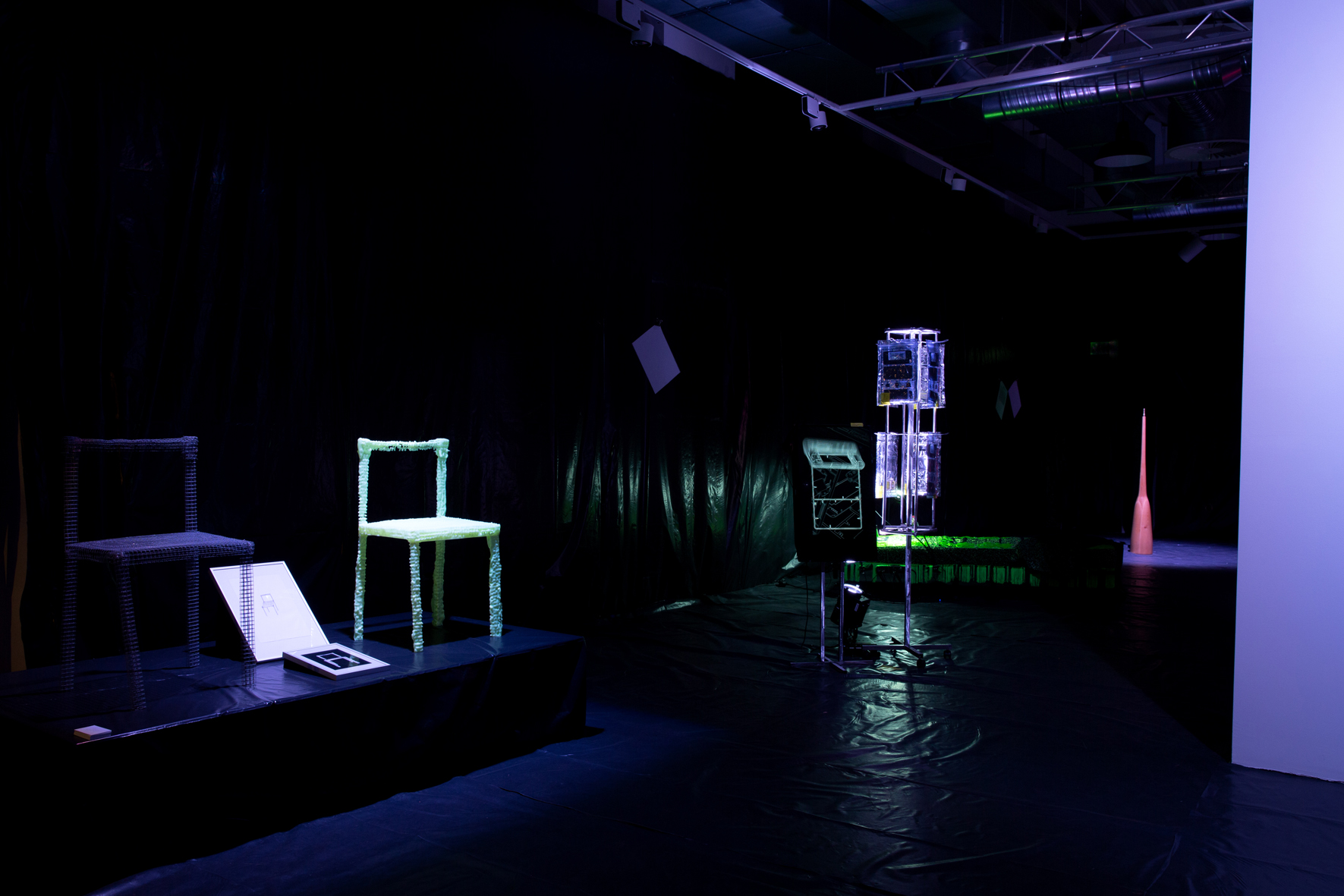
GRAPHIC DESIGN
Eloise Harris & Max Pietro Hoffmann
︎︎︎www.eloiseharris.com
︎︎︎www.maxpietrohoffmann.com
Eloise Harris & Max Pietro Hoffmann
︎︎︎www.eloiseharris.com
︎︎︎www.maxpietrohoffmann.com
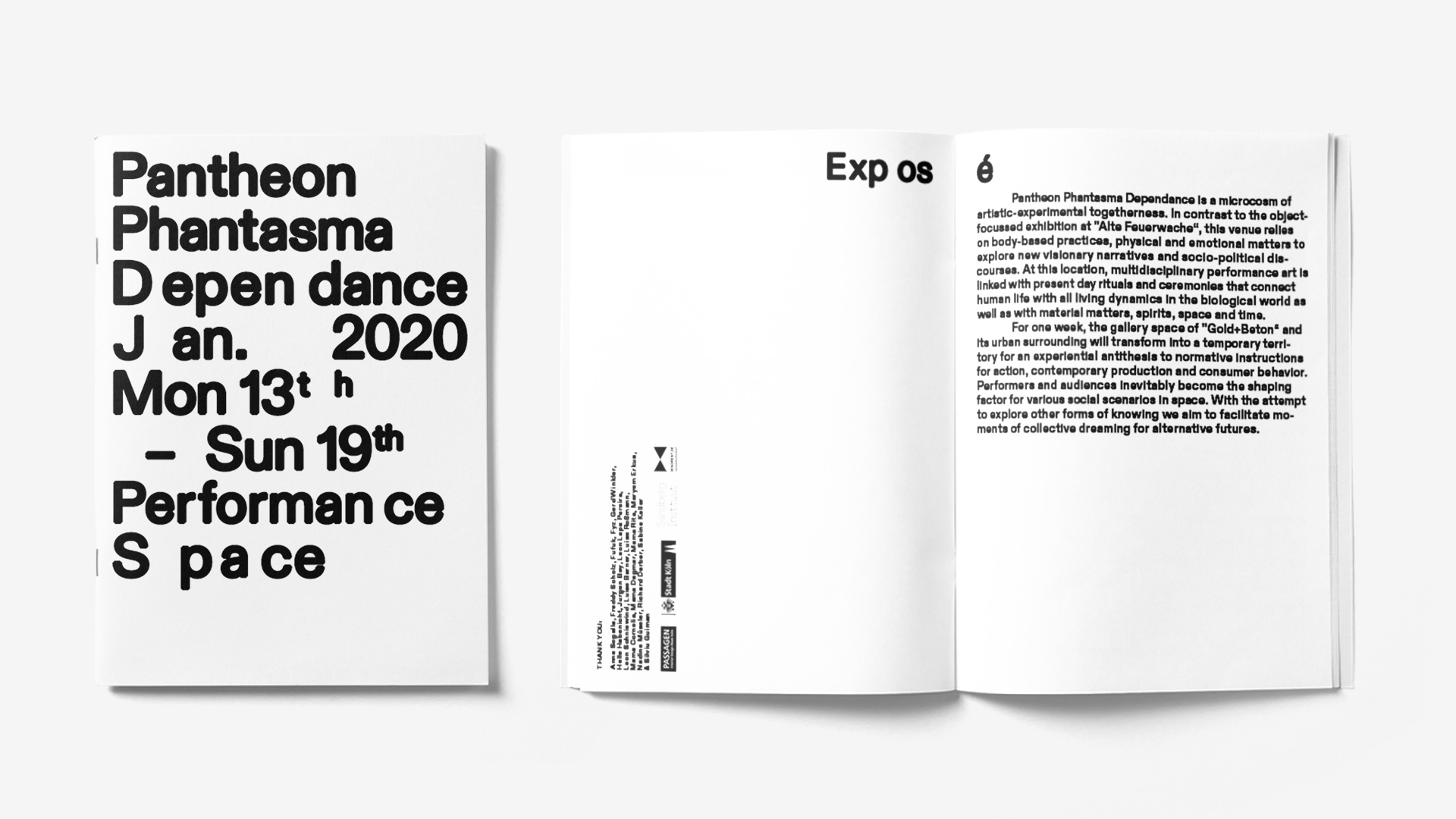
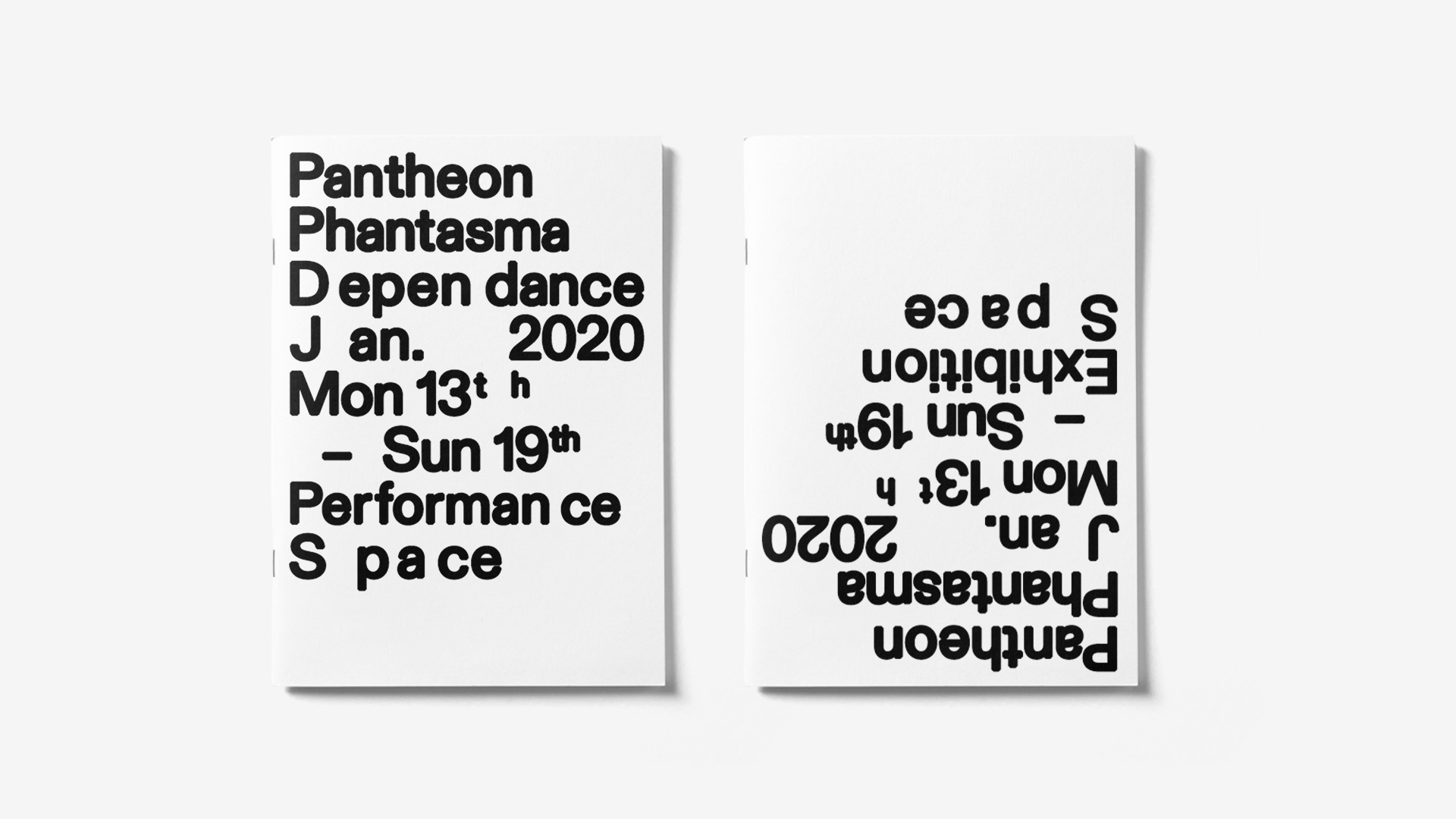


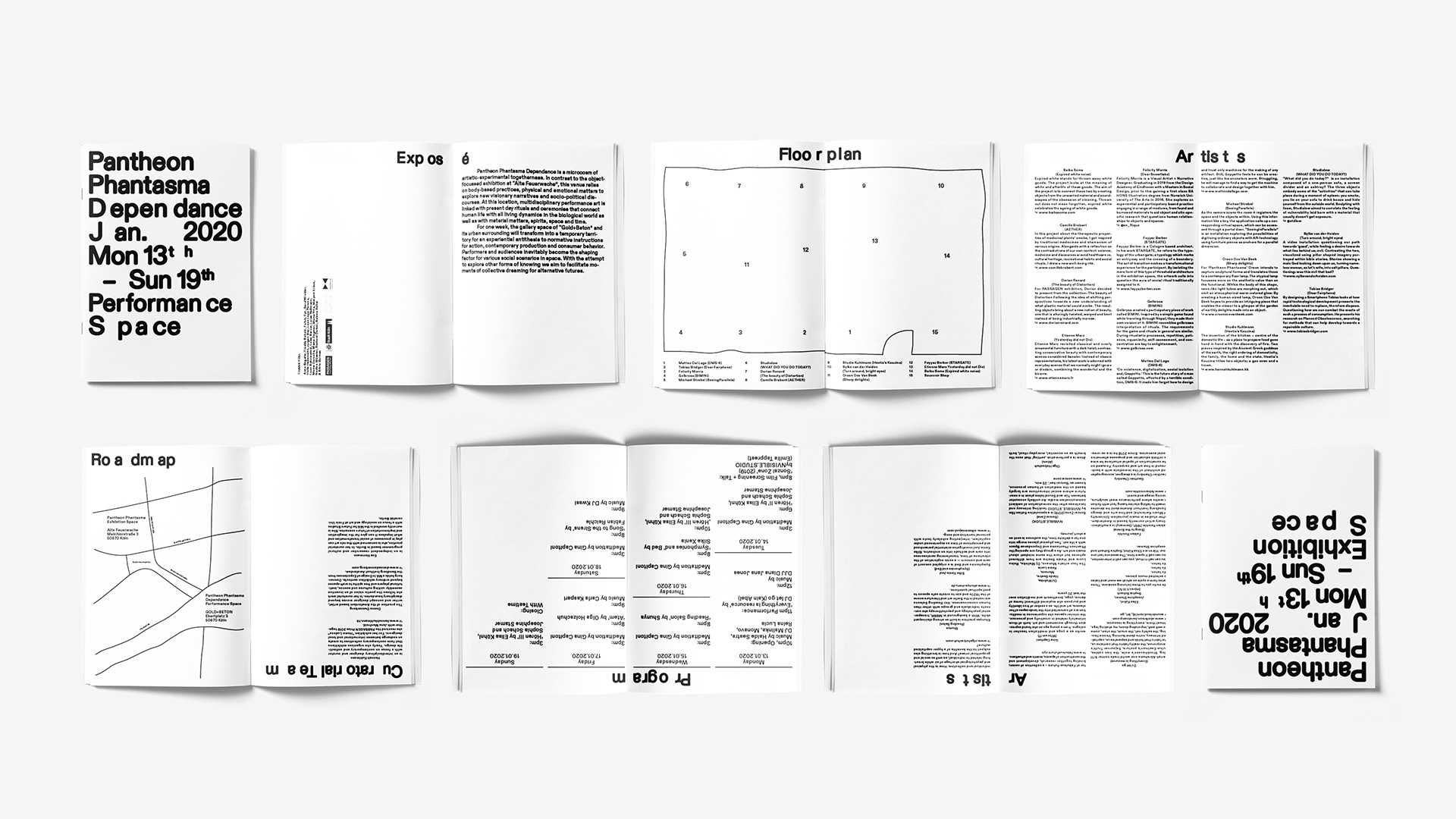


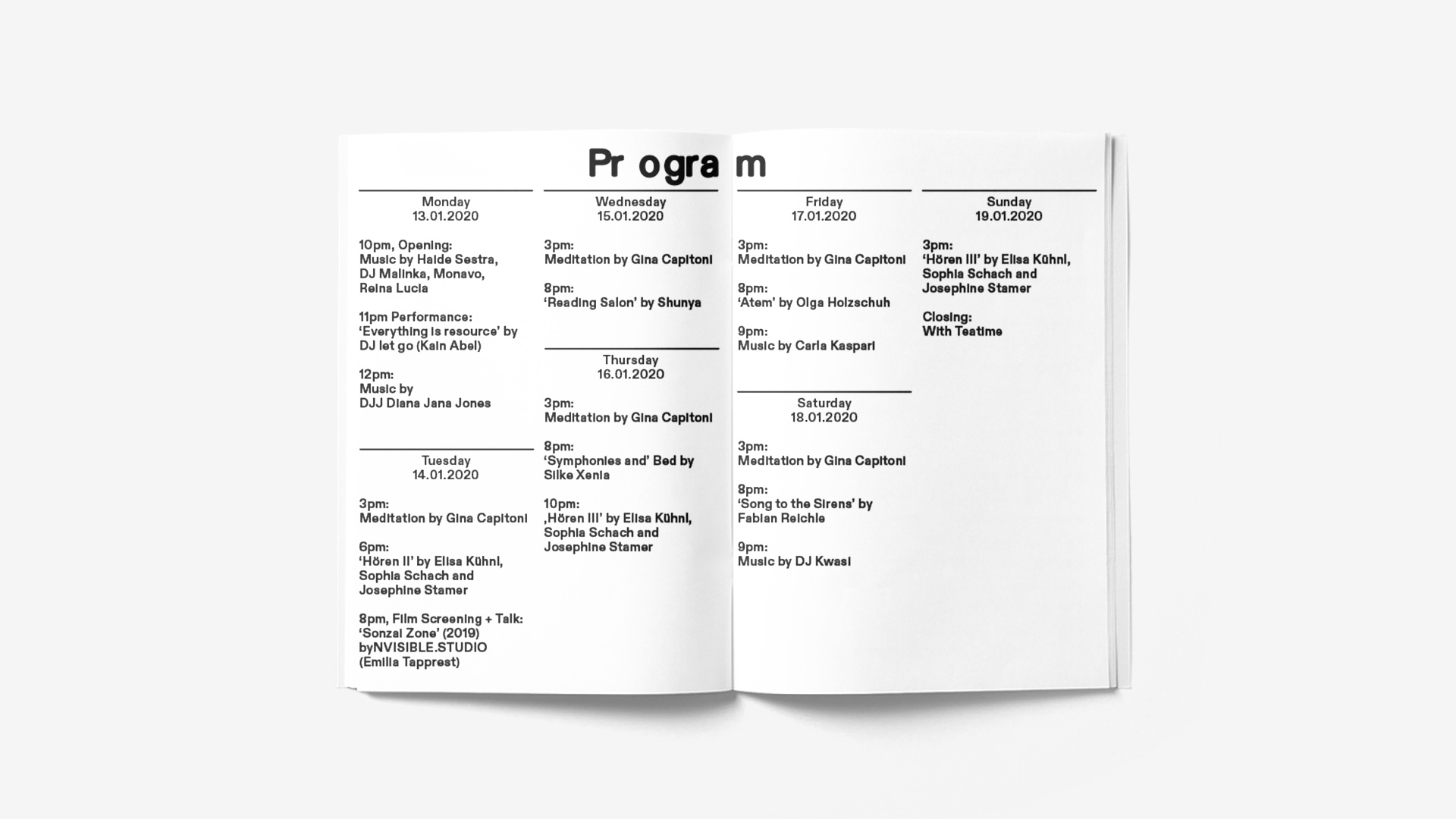
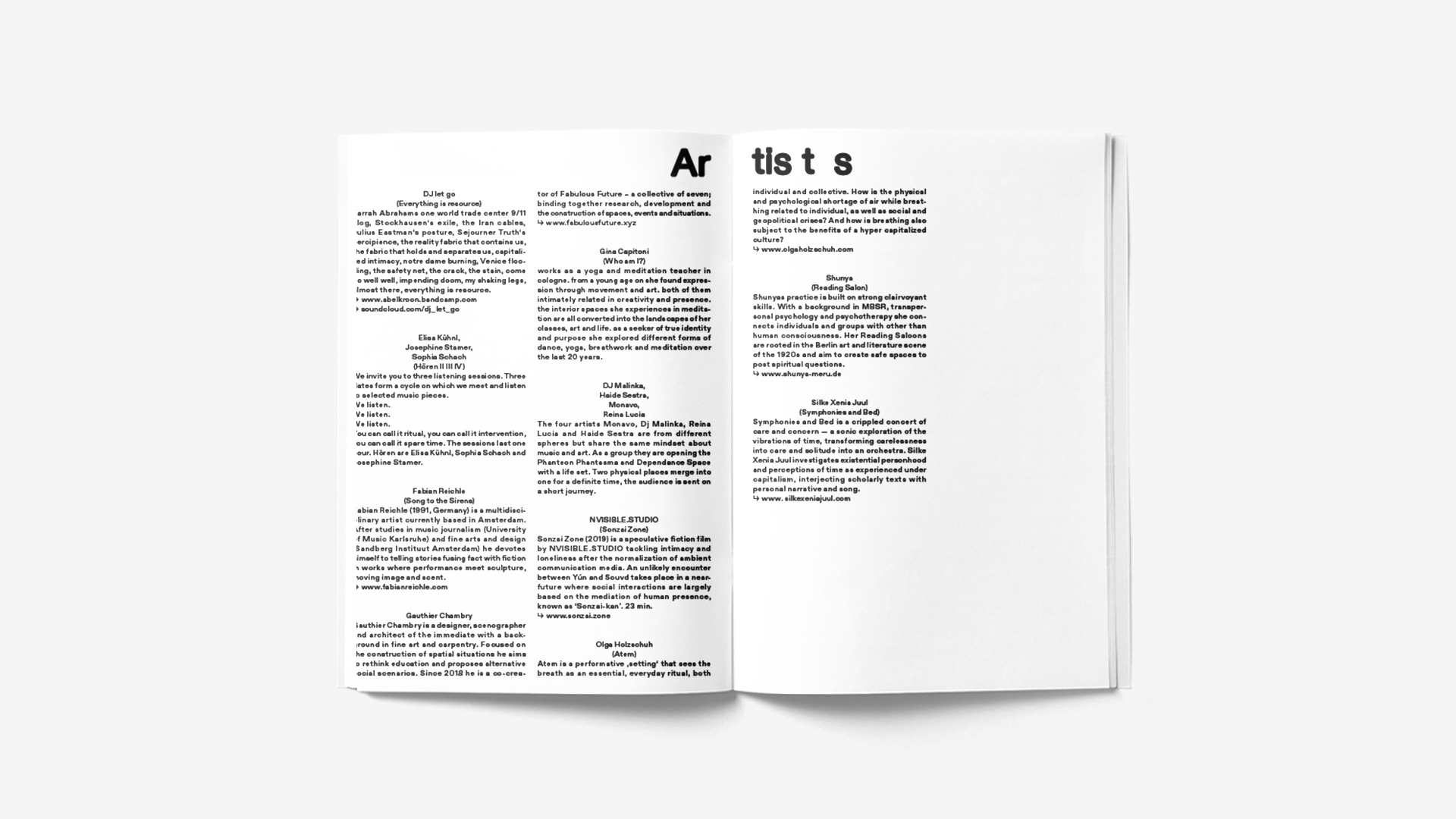

Stargate
Feyyaz Berber
STARGATE refers to the typology of the archway. This form of threshold architecture is laden with manifold significance: it defines what is inside and what is outside; it sets a place of transgression which, for those transgressing, marks an alteration in space and, sometimes, in mind too. Legends and superstition can be connected to the archway: going through it can promise good or threaten with bad luck. Political power, military success used to be expressed in a triumphal arch — the entry to a sacred space is regularly designed as an archway.
The form of the archway itself — pronouncedly opening a pathway, closing it off from the surroundings with heavy stonework — provokes to go through it: it is the scenery of a physical, symbolic, ritual transformation. STARGATE isolates the archway, albeit conserving its formal characteristics, in the exhibition space, likening it to a tower. Its symbolic characteristics however are weakened: one still can go through it, but it does not separate the outside from the inside, does not lead from one into another, different space. When it is passed through, there seemingly happens: nothing — it is an image left over of a transformation no longer taking place. A model for this was Boullée’s study of an arc de triomphe, in which an archway is erected in gigantic isolation, far outside town in open country, not lending any kind of spatial order to its environment.
In the inside of the archway an illusionary sky with stars is painted. In earlier times one looked up to the stars in order to find indication for future events. In Dante’s Paradiso the stars are said to form, in the case of favourable constellation, the human fate like wax. STARGATE rather seeks to associate its sky with the starry scenery that Schinkel designed for Mozart’s Magic Flute: this new heaven is rationalised, depopulated by the gods, disconnected from superstition. It is — in Schinkel’s case with mathematic regularity, in the case of STARGATE loosely and accidentally — covered by stars that are not constellated to symbolic figures. They do not offer promises or insight; they are cheerfully insignificant.
︎︎︎www.feyyazberber.com
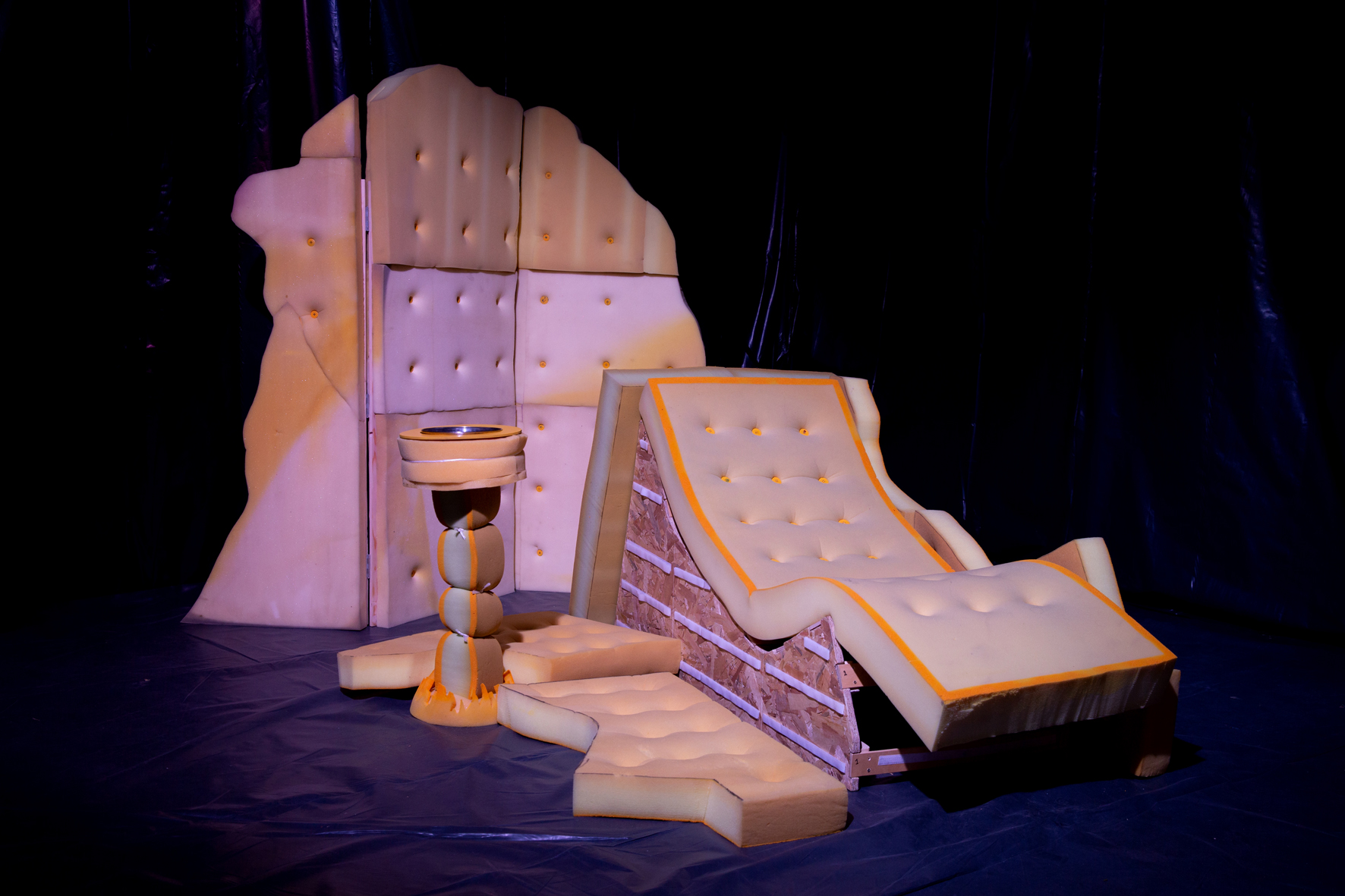
What did you do today?
Studiolow
What did you do today? is an installation composed of a one-person sofa, a screen divider and an ashtray? The three objects embody some of the « activities » that can take place during a moment of spleen: you smoke, you lie on your sofa to drink booze and hide yourself from the outside world. Sculpting with foam, Studiolow aimed to correlate the feeling of vulnerability laid bare with a material that usually doesn’t get exposure.
︎︎︎www.studiolow.com
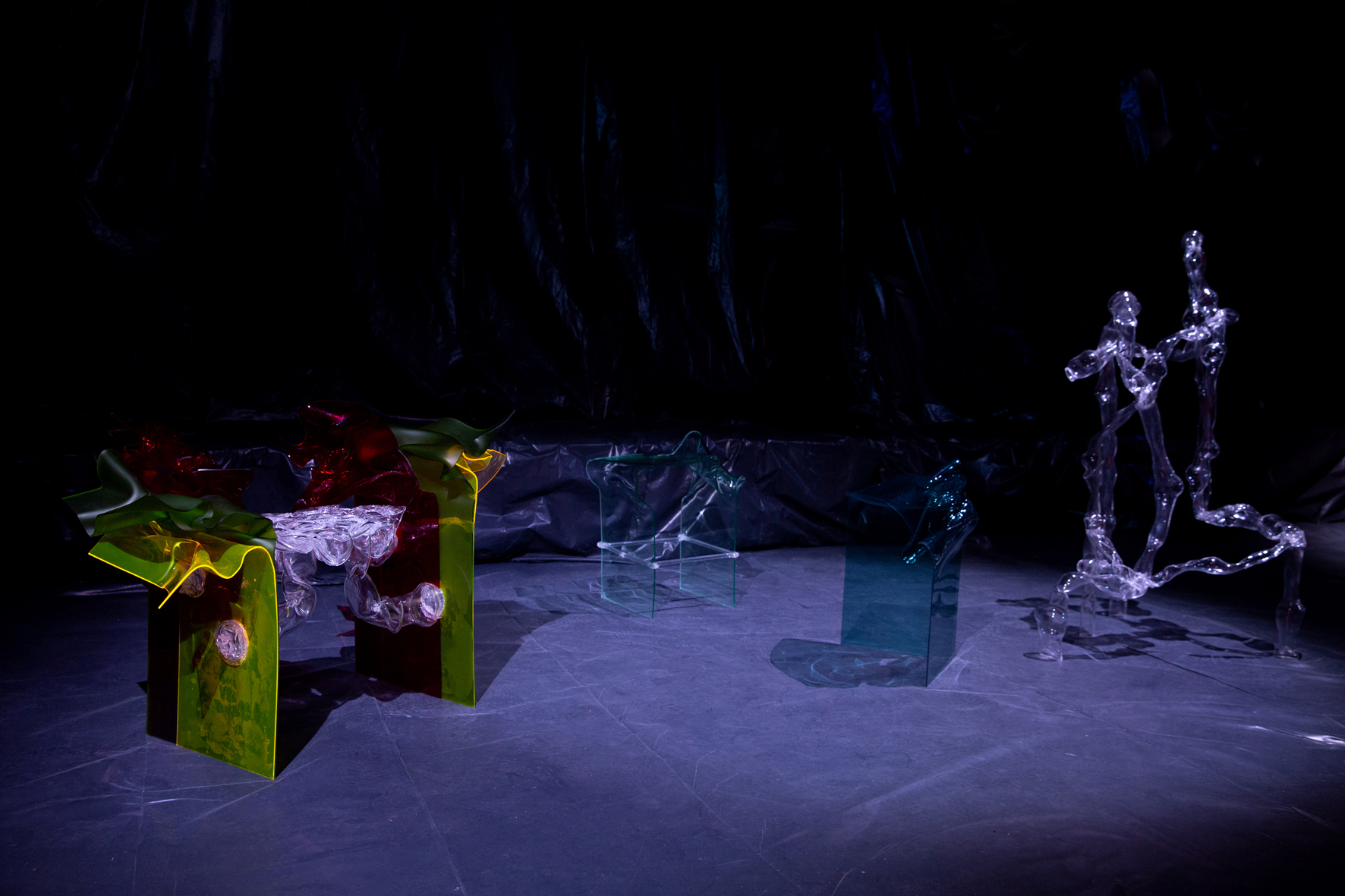
The Beauty of Disortion
Dorian Renard
For PASSAGEN exhibition, Dorian decided to present from the collection : The beauty of Distortion Followingtheideaofshiftingperspectivestowardsanewunderstanding of what plastic material could evoke. The resulting objects bring about a new notion of beauty, one that is alluringly twisted, warped and bent instead of being industrially morose.
Dorian Renard is a French designer based in Eindhoven.
Is practice is based on extracting the characteristics of materials in order to explore new definitions of what furniture can be. By mixing different process of making, his work oscillates between a sculptural and functional approach, appreciated just as much for their beauty as their use value.
︎︎︎www.dorianrenard.com
 Post Bed Post
Post Bed PostFelicity Morris
Dear Snowflake. This secret is between us two. The only other to be allowed into the confidence is an inanimate object. The bed.
Redefining the relationship with the bed, since the infiltration of work, screens, human exchange and non-stop access emphasises that this object has become a multi-purpose site in the age of the millennial. The relationship with this archetype has evolved to question will we ever be alone in bed with ourselves again living in this #postbed society? Prior to this project, Generation X have long dictated the conversation surrounding the bed. Now, Generation Y finds their voice. This snowflake’s perspective challenges our current notion of the bed through cultural phenomena and observations to speculate the future of the bed and the digital information that enters the private space of the domestic sphere. Through the use of digital media this project aims to make an intimate domestic object a site for public broadcast for the millennial generation. The anthological installation makes use of broadcasting, film montage, spoken word and mattress orientation assembled into a scenographic language that excludes Generation Y from the conversation they so often dictate.
︎︎︎www.felicitymorris.com

AETHER
Camille Brabant
Fostering the use of medicinal plants in a despised shape, reconsidering smoke as an interesting way of use.
As an ancestor of aromatherapy, we have seen traditional medecine, household practices, and shamanism of various cultures using some plants’ smudge inhalation for their precious virtues and their prompt effect. However, smoke is a systematically disregarded matter in our culture, because we demonise carbon at all price..for good reasons sometimes, but then why do we keep on smoking bad stuff like industrial cigaretts, hookah, psychoactive substances... and as often as we do ? By doing so, we not only harm ourselves, but we might also be missing the gifts smoke can offer when used right, by boosting the active agents of some medical herbs’ essence. Alongside with it, we rely on chemical medecines with strong side effects..
Reflecting on our medical and recreational habits, questionning prescripted drugs, and chosing to esteem customs that stood the test of time.
Drawing a ritual lying in between the recreational and the medicinal, the inhaling pipes offer to benefit from plant’s properties for healing purposes or mere maintainance of well-being. As a mixed scenario where habits that usually conflict with healthcare become a curing ritual, we can also rekindle the social interactions that are part of the beauty of such rites.
︎︎︎www.camillebrabant.com

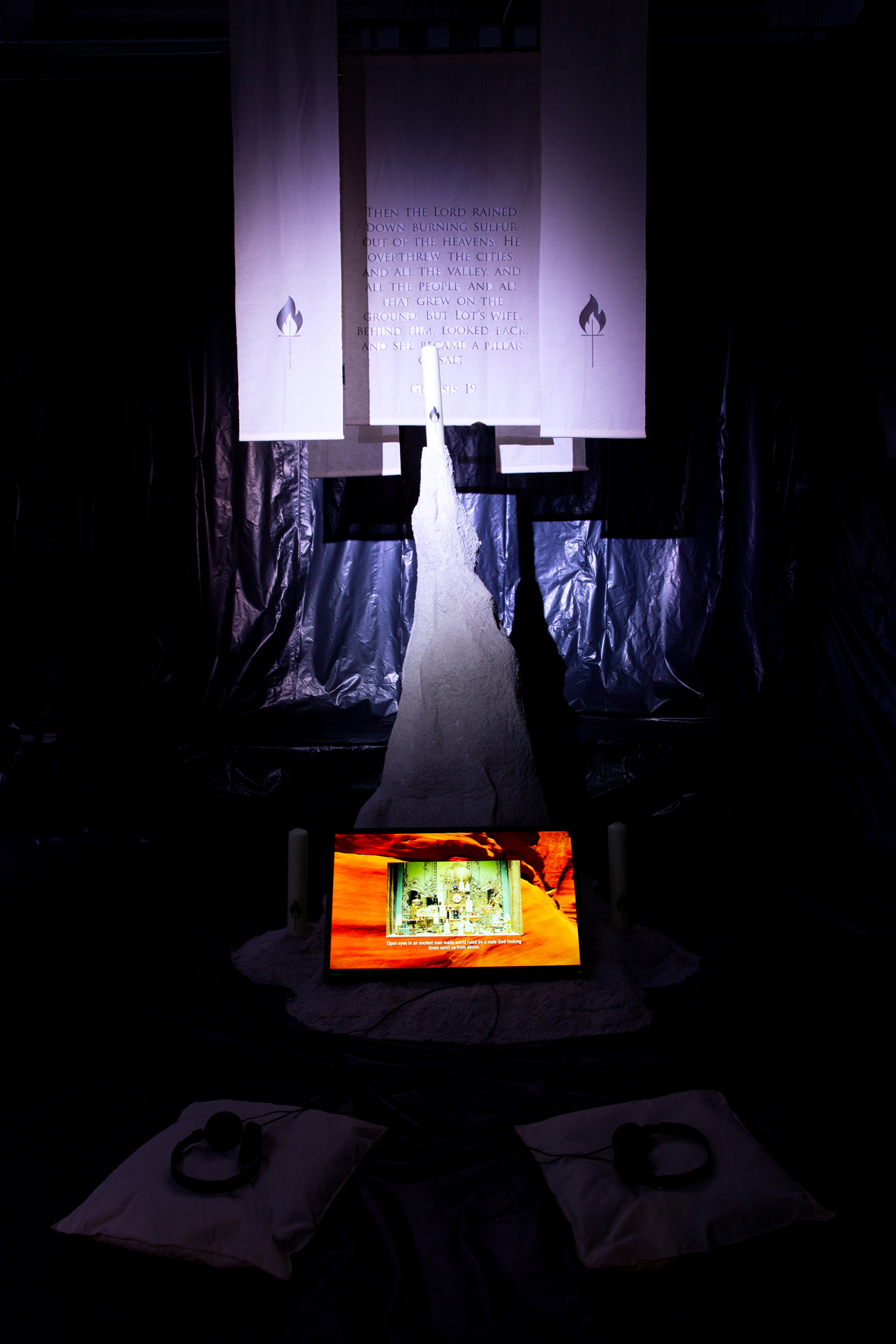
Turn around, bright eyes
Sylke van der Heiden
‘With every step she took she felt the city and it‘s so called evil calling her back. Conflicted between the rational and eternal love she had for Him and her husband, who was following Him, his leader, as a blind sheep, and the sheer temptation and desire towards the place that she was now walking away from. A place she called home. She felt the heat of its fire burning behind her, radiating through her body. Pulsating, pumping itself through her veins, reaching her mind. Taking control of her body. Each cell was filled with desire, reaching out for what was laying behind her.’ (excerpt of Turn around, bright eyes.)
Lot’s wife. A woman without name in an ancient man made world ruled by a male God looking down upon us from above.
Turn around, bright eyes is a video installation questioning our predetermined path towards what in the eyes of religion, and perhaps our main idea of society, is seen as good, while feeling the desire towards that what lies behind us; evil. Looking for the confrontation between the two; good and evil, visualised using the salt pillar shaped imagery that is portrayed within the bible. These stories that are showing us male God looking down upon us from above, turning woman without name, like Lot’s wife, into salt pillars.. Asking the question: was this evil so bad after all? Then the serpent said to the woman; “For God knows that in the day you eat of it your eyes will be opened, and you will be like God, knowing of good and evil.” [Gen 3:4]
︎︎︎www.sylkevanderheiden.com
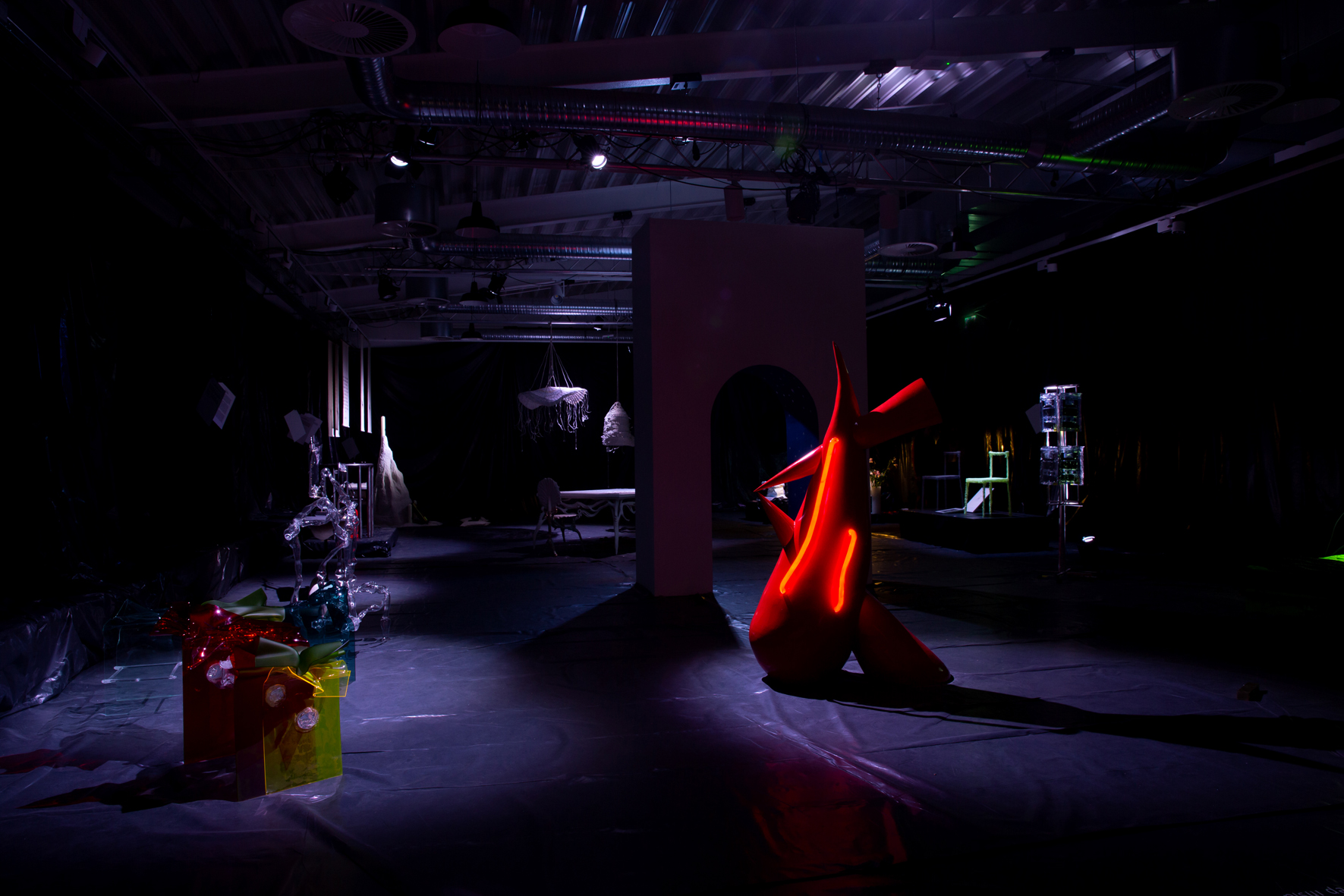
Garden of Earthly Delights
Orson Oxo van Beek
For Passagen Orson Oxo Van Beek will make floor-lamps which reference the surreal objects and silhouettes as seen in 15th-century painting, ‘the garden of earthly delights’ by Jheronimus Bosch. (Within this triptych, Bosch depicts three worlds, the garden of Eden, the garden of earthly delights and hell which can be read from left to right and in which each panel was essential to the meaning of the whole.) Surrealist painters often recognize Bosch as the first modern painter to establish surreal landscapes.
The enigmatic architectural sanctuaries/temples seen within the different panels indicate a rich imagination where he visualizes shapes which the viewer can’t place.
These obscure volumes instead raise questions for open interpretations. For ‘Phantom Phantasma’ Orson intends to capture these sculptural forms and translate those to contemporary floor lamps. Each of these light sources will reflect a different panel and the atmosphere surrounding it. This will be implemented within the lamps by contrasting unusual colors and sizes.
Orson Oxo Van Beek is a spatial designer who specializes in furniture and set. Within his design practice, he tries to explore the boundaries of contemporary design where his references range from Baroque furniture to cult films. During the process of a new project, he develops or dives into specific material research that contributes to the final result.
︎︎︎www.orsonoxovanbeek.com

SeeingParallels
Michael Strebel
As the camera scans the ground in front of the user, it registers the space and the objects within. Using this information like a key, the application calls up a corresponding virtual space, which can be accessed through a portal door.
“SeeingParallels” is an installation exploring the possibilities of digitising ordinary objects with AR-technology using furniture pieces (a chair) as anchors for a parallel dimension.
By turning basic furniture pieces into marker objects for Augmented Reality, the physical object finds a renewed existence in a virtual form. Serving as proxies or placeholders they become vessels for a digitally enhanced function, a virtual space, experience or life-form. What potentials these new spaces or life forms could hold, is yet to be explored.
1. Go to your GOOGLEPLAY Store
2. Download the App: SeeingParallels 3. Scan
︎︎︎www.instagram.com/mkmstre

Yesterday did not die
Etienne Marc
Etienne Marc revisited classical and overly ornamental furniture with a dark twist; contrasting conservative beauty with contemporary scenes considered banaler. Instead of classic representations, his latest work is adorned with everyday scenes of decay that we normally might ignore or disdain. Personalized and imbued with symbolism, his piece combines the wonderful and the bizarre, creating a friction between the objects that are the expression of wealth and the material reality of our time.
︎︎︎www.etiennemarc.fr

Expired white noise
Baiba Soma
Expired white stands for thrown away white goods. The project looks at the meaning of white and afterlife of these goods. The aim of the project is to connect these two by creating objects from the unwanted material and soundscapes of the obsession of cleaning. Thrown out does not mean forgotten, expired white celebrates the ageing of white goods.
We tend to associate purity and perfection with the colour white. This colour has been widely used in the production of the consumer goods to show these particular states as well as indicating hygiene. Back in the days owning white goods also meant that you would take care of them by cleaning and cherishing the products. The rapid development of technology has created the term throwaway culture and easy access to new products has left out the need to cherish the goods. The project expired white looks at the afterlife of the discarded white consumer goods and aims to show the potential of this unwanted material. By giving a new function to the plastics and cables, the life of unwanted goods continues in a new shape.
1. Scan the QR Code
2. Plug earphones
3. Listen
︎︎︎www.baibasoma.com
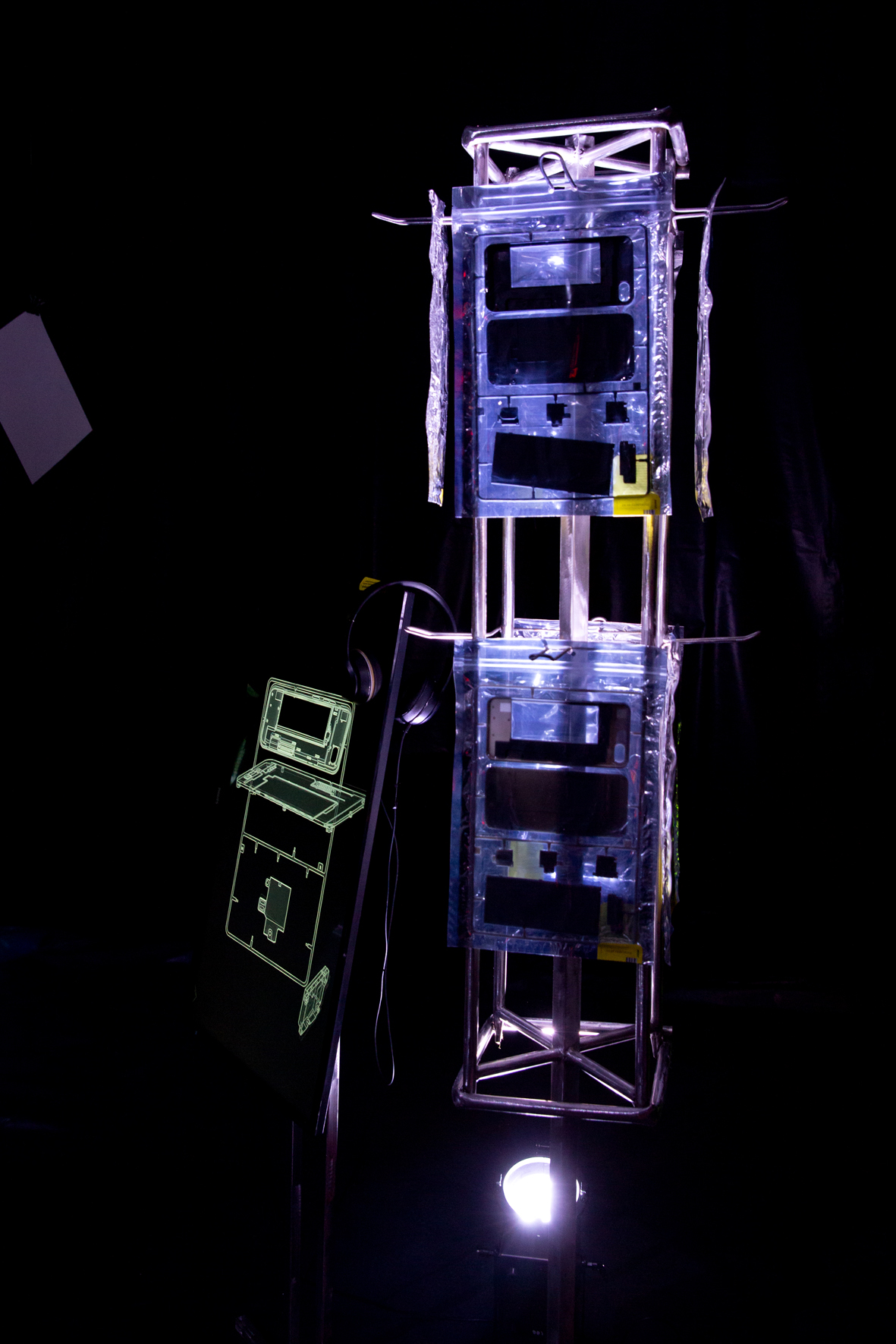 Dear Fairphone
Dear FairphoneTobias Bridger
“Obsolescence is an inevitable result of rapid technological development, we should accept this and as a consequence build upon solutions that combat the waste of such products. Building towards a repairable culture our products need to not just provide alternatives to Planned Obsolescence but also persuade us that such alternative methods of consumption are more desirable than our current consumer habits. A smartphone designed to be repaired needs to stand away from how smartphones are presented to us today, I do this by providing the components to be assembled by the consumer. Designed to be built to teach how to be repaired.”
︎︎︎www.tobiasbridger.com
 Gelbrosa BIMINI
Gelbrosa BIMINIFor this years PASSAGEN exhibition, Pantheon Phantasma they created a participatory piece of work called BIMINI. Inspired by a simple game found while traveling through Nepal, they created their own version by investigating into the craft of wood-turning.
This piece resembles gelbrosas interpretation of rituals. From their perspective, the requirements for their game and rituals in general are comparable. During ritualistic processes, repetition, patience, equanimity, self-assessment, concentration and modesty are key to enlightenment.
Gelbrosa is founded by Carsten in der Elst and Leon Schniewind. The duo tries to find different ways to extend the common image of product oriented design by blurring the lines between fun and function, process and product and gelb and rosa.
Documenting the production shares their experience in atmosphere, materials and craftsmanship.
︎︎︎www.gelbrosa.com

Hestia‘s Kouzina
Studio Kuhlmann
The invention of the kitchen, centre of the domestic life, as a place to prepare food goes hand in hand with the discovery of fire. Two pieces inspired by the Ancient Greek goddess of the hearth, the right ordering of domesticity, the family, the home and the state Hestia’s Kouzina titles two objects, a gas oven and a trown.
︎︎︎www.hannahkuhlmann.hk
︎ Prev Next ︎
101PS
info@101ps.space
+49 174 694 343 1
Hartwichstraße 101
50733 Cologne
Germany
info@101ps.space
+49 174 694 343 1
Hartwichstraße 101
50733 Cologne
Germany
© 2020 101PS
